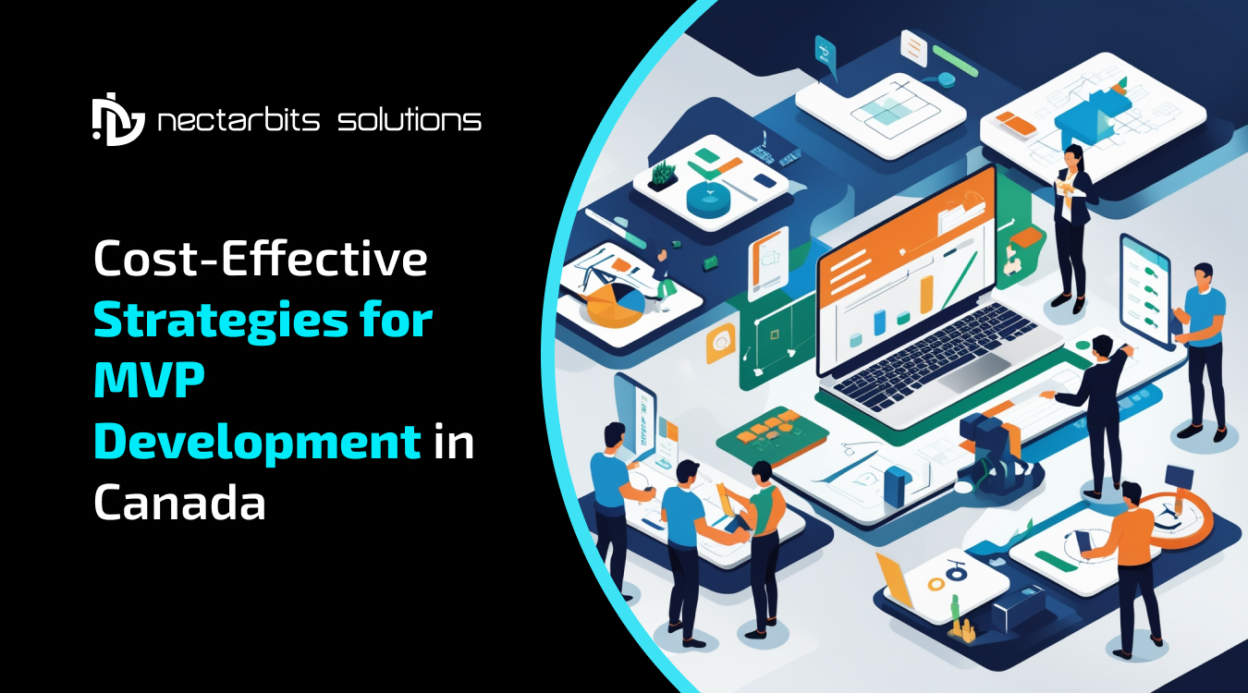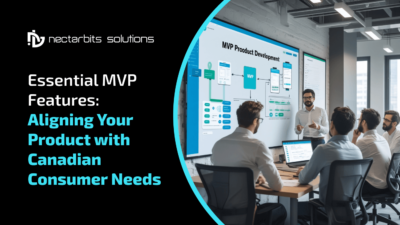For startups, MVP or Minimum Viable Product is a critical step to validate your ideas without a huge marketing budget. Canadian entrepreneurs need to understand MVP development costs and implement strategies to keep costs down to thrive or fail. In this blog, we explore actionable strategies to cut costs without sacrificing quality in MVP development by drawing from those with happy experiences and real case studies.
Why MVP Development is Crucial for Canadian Startups
An MVP is just the barebones version of a product that helps solve a user’s core problem. It enables businesses to popularize the idea, receive feedback, and build, before taking it to full-scale development. MVP software development makes sense for Canadian startups, where resources are often a problem.
With such high rates of startups failing because their funds ran out, it’s crucial that MVP strategy be cost-effective. According to a 2024 report, 29% of startups fail due to running out of cash, making cost-effective MVP strategies essential.
Key Factors Influencing MVP Development Cost
1. Scope and Features
The largest factor in MVP development cost is the scope of your MVP. Cutting costs can be as much as 50% by focusing on core features over ‘nice to have’. For example, Dropbox first validated demand with a simple explainer video and then built its full product.
2. Technology Stack
Choosing the right technology stack can benefit you a lot. Frameworks such as React Native or Flutter have a wide library of open-source software that can substantially cut MVP software development costs by allowing cross-platform compatibility.
3. Team Composition
Costs are also affected by the selection between in-house teams, freelancers, or MVP outsourcing agencies. Hiring in Canada is a very expensive affair while hiring in regions such as Eastern Europe or Asia can cut costs by 30 to 50 percent.
4. Design Complexity
Design complexity, particularly in the UI/UX realm, can drive up costs. You can save thousands of dollars by simplifying design elements while still being usable.
Cost-Effective Strategies for MVP Development in Canada
1. Prioritize Core Features
Begin by focusing on the core features that truly focus on your users’ most pressing pain points. Take order placement and tracking for example (because that’s what you need for a food delivery app) instead of advanced cool stuff like AI recommendations.
2. Leverage Open-Source Tools
By using open source technologies you can reduce MVP development cost drastically. For backend development, we have tools like Firebase, and for frontend design, we have tools like Bootstrap which are free and massive popular.
3. The Best Agile and Lean Methodologies
Iterative improvement and fewer costly mistakes are allowed by agile development. The lean methodology is in building, measuring, and leveraging quickly, keeping resources at a minimum.
4. Outsource Strategically
When it comes to outsourcing an MVP, countries like the Philippines or Ukraine can easily provide you access to skilled developers at a smaller price point. For example, hourly rates in Asia are between $25 – $80, while in Canada they go between $100 – $500.
5. Use Pre-Built Solutions
But there are platforms like DBB Software with pre-built modules of common features such as a payment system that speed up development time and reduce your MVP software development costs.
6. Increase Test and Feedback Loop Speed
Getting automated testing tools early and getting early user feedback early can avoid costly post-launch fixes. Platforms like TestFlight for beta testing are cheap and work well.
Read More:- Why is MVP in Software Development Necessary for Businesses in 2024?
Hidden Costs to Watch Out For
While focusing on MVP development costs, it’s easy to overlook hidden expenses. These include:
- App Maintenance Cost: Bug fixes and updates can amount to 15–20% of your yearly budget.
- Marketing Expenses: The best MVP still requires marketing to get in front of its audience. Set aside 15–20 percent of your budget for the first campaigns.
- Scaling Costs: Server and infrastructure can scale up at a rocketing cost as you grow your user base. There are options like scaleable cloud solutions, AWS or Google Cloud.
Comparing MVP Development Costs: US, UK, and Canada
This table provides a detailed comparison of MVP development costs across the United States, United Kingdom, and Canada. It highlights key factors influencing costs, such as hourly rates, feature complexity, and platform choices, while also offering actionable cost-saving strategies for startups and businesses.
| Region | Average MVP Development Cost | Key Factors Influencing Cost | Cost-Saving Strategies |
| United States | $100,000−$200,000 | High hourly rates (100−150/hour), complex features, and advanced technology stacks. | Outsourcing parts of the project, using open-source tools, and adopting Agile methodologies. |
| United Kingdom | $80,000−$150,000 | Similar to the US, but slightly lower hourly rates (80−120/hour). High design and testing costs. | Offshore development, prioritizing core features, and leveraging no-code tools. |
| Canada | $70,000−$130,000 | Moderate hourly rates (70−110/hour). Costs vary based on team size and platform complexity. | Outsourcing to Eastern Europe or Asia, using cross-platform frameworks like React Native. |
| India | 20,000−20,000−50,000 | Low hourly rates (20−40/hour), skilled developers, and cost-effective infrastructure. | Leveraging local talent, using open-source tools, and focusing on core features. |
Key Insights:
- Hourly Rates: The US has the highest hourly rates, followed by the UK and Canada, while India offers the most cost-effective rates.
- Complexity: Costs increase with the complexity of features, such as AI integration or real-time data processing.
- Platforms: Developing for multiple platforms (iOS, Android, web) increases costs. Cross-platform development can save up to 40% compared to native development.
- Post-Launch Costs: Maintenance and updates typically add 15-20% to the initial development cost.
Partner with India-based professional MVP Development Companies like Nectarbits to ensure optimal efficiency at the lowest development costs.
How to Budget for MVP Development in Canada
1. Define Your Scope
Define what you will and will not include in your MVP – all the core features and who you will target. That helps in allocating resources effectively.
2. Choose the Right Team
If you have a budget and the needs of the project, decide if you want to spend this money in-house, hire freelance programmers or get an MVP done without going broke.
3. Set a Contingency Fund
Give yourself up to 10–15% of your budget for things that you’re not expecting, like additional tests or tweaks to an existing feature.
4. Monitor Spending
Track expenses with tools like Trello or Jira or utilize project management tools and keep you on budget.
Conclusion
Don’t assume that reducing MVP development costs equates to quality. Instead, Canadian startups can create MVPs focused on core features that barely cost anything, without overspending, by using open-source tools, prioritizing core features, and strategically outsourcing. A crucial point to keep in mind is that we don’t need to design a perfect product, an MVP is meant to learn swiftly and iterate. And with the right strategies you can validate your idea, find a first customer, attract early investors, and bring it closer to long-term success.
Before launching into your MVP software development journey, it’s important to establish your scope, pick the right team, and practice cost-effective measures.
CTA:- Ready to Develop your own Cost-Effective MVP in Canada?
(Consult Us)
Frequently Asked Questions (FAQs)
1. What is the average cost of MVP development in Canada?
The average cost of MVP development in Canada ranges between $50,000 and $150,000, depending on the project scope, complexity, and team composition. Choosing a minimal feature set and leveraging open-source technologies can significantly reduce these costs.
- Hiring a local team can cost $100-$200/hour.
- Outsourcing to Eastern Europe or Asia can cut hourly rates by up to 50%.
- Using pre-built tools further reduces expenses.
2. How can startups reduce MVP development costs?
Startups can minimize MVP development costs by focusing on core features, using open-source tools, and opting for MVP outsourcing to cost-effective regions. Agile methodologies also help avoid expensive mistakes during development.
- Prioritize essential over “nice-to-have” features.
- Use platforms like Firebase for backend and Bootstrap for frontend.
- Choose offshore development teams for lower hourly rates.
3. What are the hidden costs of MVP software development?
While the primary focus is often on development, hidden costs like app maintenance, marketing, and scaling can add up quickly. For instance, app maintenance costs account for 15-20% of the total budget annually.
- Marketing expenses require 15-20% of your initial budget.
- Scaling infrastructure for growing users can lead to unexpected costs.
- Regular updates and bug fixes should be factored into the plan.
4. Is MVP outsourcing a good option for Canadian startups?
Yes, MVP outsourcing is a popular option for startups looking to reduce costs without compromising quality. By outsourcing to regions like Eastern Europe or Asia, Canadian businesses can save up to 50% on development expenses.
- Offshore teams charge $25-$80/hour, compared to $100-$200/hour locally.
- Agencies offer dedicated resources for development and testing.
- Ensure clear communication and timelines to avoid delays.
5. How does app maintenance impact overall MVP development costs?
App maintenance costs typically account for 15-20% of the annual budget. This includes updates, security patches, and performance optimizations, which are crucial for long-term success.
- Bug fixes and feature enhancements are recurring expenses.
- Automated tools like Firebase can reduce maintenance overhead.
- Regular user feedback helps prioritize cost-effective improvements.




